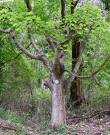Acer Saccharinum Tree Information
Images of Acer Saccharinum:





Acer Saccharinum grows in the following 37 states and provinces:
Alabama, Arkansas, Connecticut, Delaware, Florida, Georgia, Illinois, Indiana, Iowa, Kansas, Kentucky, Louisiana, Maine, Maryland, Massachusetts, Michigan, Minnesota, Mississippi, Missouri, Nebraska, New Hampshire, New Jersey, New York, North Carolina, North Dakota, Ohio, Oklahoma, Ontario, Pennsylvania, Rhode Island, South Carolina, South Dakota, Tennessee, Vermont, Virginia, West Virginia, WisconsinInformation about Acer Saccharinum:
The Acer Saccharinum is commonly known as the Silver Maple as well as Soft Maple.
The currently accepted scientific name for silver maple is Acer saccharinum L. (Aceraceae) . There are no currently accepted infrataxa. Hybrids (A. xfremanii Murr.) with red maple (A. rubrum) have been reported .The range of silver maple extends from New Brunswick to west to northern Michigan, northern Wisconsin and northern Minnesota; south to southeastern South Dakota and eastern Oklahoma; east to northern Georgia; and north through western South Carolina and western North Carolina to Maine. It is found in northwestern Florida on the Apalachicola and Choctawhatchee rivers but is not otherwise found on the Gulf or Atlantic Coastal Plain .Silver maple is a dominant canopy species only in streamside communities and lake fringes, and occasionally in swamps, gullies, and small depressions of slow drainage . The elm-ash-cottonwood type is defined as bottomland forest in which elms (Ulmus spp.), green ash (Fraxinus pennsylvanica), eastern cottonwood (Populus deltoides), silver maple, or red maple comprise a plurality of the stocking . Silver maple and/or American elm (Ulmus americana) are usually the dominant tree species in southern Wisconsin floodplain forests . In Illinois, silver maple was the leading dominant on floodplain sites that were flooded at least 25 percent of the time. With increased elevation other species increased, although silver maple continued to be dominant on sites that were flooded 3 to 5 percent of the time. Silver maple, sycamore (Platanus occidentalis), and green ash communities occurred at the lowest elevations; silver maple, sycamore, green ash, American elm, hackberry (Celtis occidentalis), and other species were found at higher elevations . In central New York, silver maple-green ash swamps are relatively low in species diversity and density . Silver maple dominance decreases with decreasing latitude; it is relatively rare in many southern floodplain forests . In the Central Forest Region (as defined by the Society of American Foresters ), understory associates of silver maple include willows (Salix spp.), redberry elder (Sambucus pubens), red-osier dogwood (Cornus sericea), and greenbriers (Smilax spp.). In the Northern Forest Region associates include swamp white oak (Quercus bicolor), sycamore, pin oak (Quercus palustrus), black tupelo (Nyssa sylvatica), and eastern cottonwood. In New England and eastern Canada, associates include sweet birch (Betula lenta), paper birch (B. papyrifera), and gray birch (B. populifolia). In New York, associates include white ash (Fraxinus americana), slippery elm (Ulmus rubra), rock elm (U. thomassii), yellow birch (B. allegheniensis), black tupelo, sycamore, eastern hemlock (Tsuga canadensis), bur oak (Q. macrocarpa), and swamp white oak . In the elm-ash-cottonwood type, other associates include black willow (Salix niger), boxelder (Acer negundo), and sycamore . Silver maple is listed as a dominant or codominant species in the following publications: 1) Composition and environment of floodplain forests of northern Missouri 2) Wetland forests of Tompkins County, New York 3) Community analysis of the forest vegetation in the lower Platte River Valley, eastern Nebraska 4) A classification of mature forests on Long Island, New York 5) Ecological communities of New York State 6) The natural forests of Maryland: an explanation of the vegetation map of Maryland Some of the information provided here is attributed to:Sullivan, Janet. 1994. Acer saccharinum. In: Fire Effects Information System, [Online]. U.S. Department of Agriculture, Forest Service, Rocky Mountain Research Station, Fire Sciences Laboratory (Producer). , available at the USDA Fire Effects Information System (FEIS) website